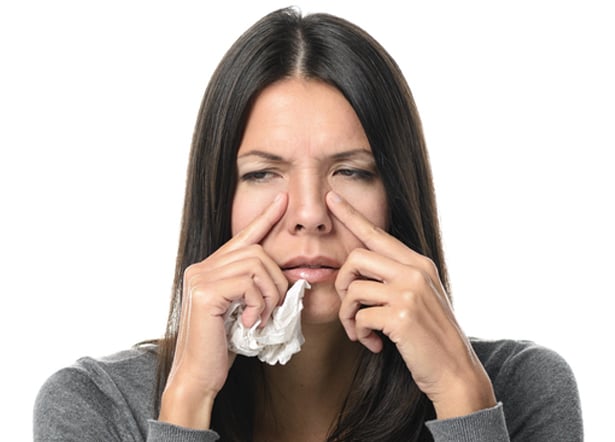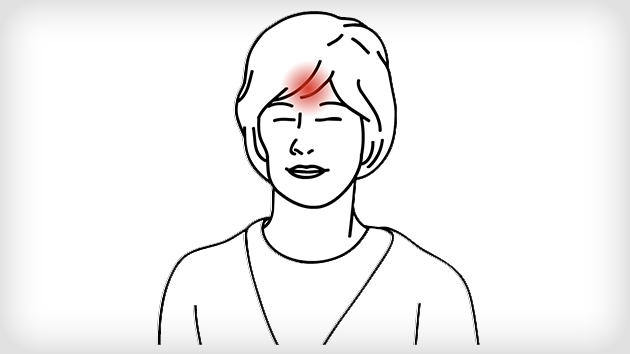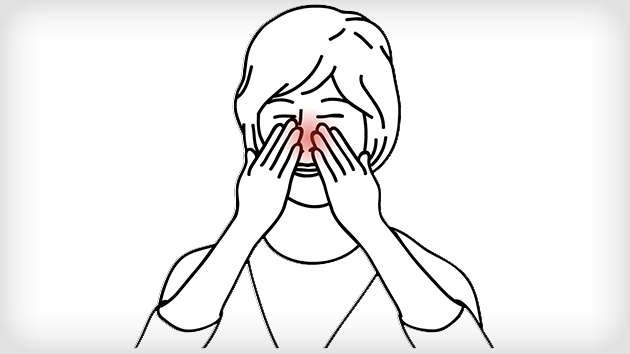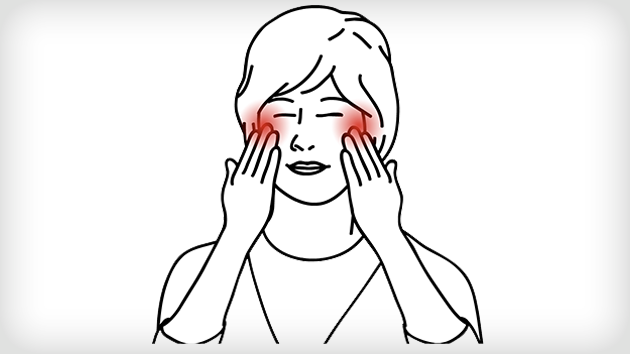CAUSES OF SINUS CONGESTION AND PRESSURE

Your sinuses are four pairs of air-filled spaces connected to your nasal passages. When working normally, the sinuses help humidify air as you breathe in and produce mucus that helps trap bacteria and foreign particles (like pollen).
When nasal passageways become blocked (often due to irritated tissues), mucus that normally drains away can build up. Swollen nasal passages and mucus build-up are the usual causes of sinus congestion and pressure.
WHICH SINUSES ARE CAUSING YOUR SINUS PAIN?

Frontal
in your forehead, vary greatly in size

Ethmoid
behind your nose and between your eyes, about the size of a matchbox

Maxillary
behind your cheekbones, between the bottom of your eyes, and the top of your upper jaw, about the size of a large walnut

Sphenoid
deep in your head behind your nose, about the size of a large grape
SYMPTOMS OF SINUS CONGESTION
Sinus congestion and pressure are difficult to ignore. The feeling of “fullness” is caused by the blockage of sinuses, as opposed to nasal congestion. Most feel the blockage in the cheeks and often find it difficult, if not impossible, to breathe through their nose.
TIPS FOR SINUS CONGESTION RELIEF
Drink water.
Water may help thin mucus, and thin mucus is more likely to drain. When you feel your sinus problems beginning, start hydrating.
Wrap it up.
Applying a warm towel to your head may relieve some pressure by easing swollen tissues.
Steam your sinuses.
The extra moisture helps keep nasal passages moist and helps with drainage. Anything from a hot shower to carefully inhaling steam from boiling water can help you feel better.
Steam on the go.
You may not be able to jump in the shower in the middle of the day. So the steam from a hot beverage or a bowl of soup can be quick sources of steam.
Consider taking a decongestant.
This medicine works by shrinking swollen tissues and allowing mucus to drain. The main available oral decongestants are pseudoephedrine or phenylephrine.
